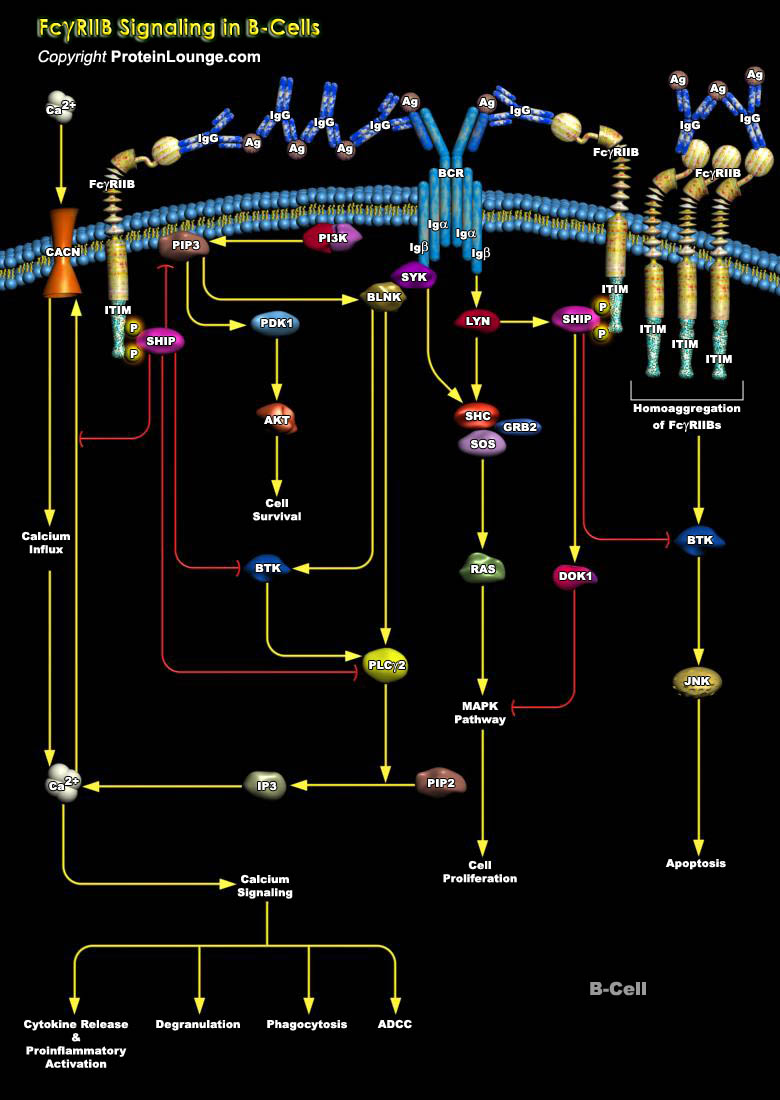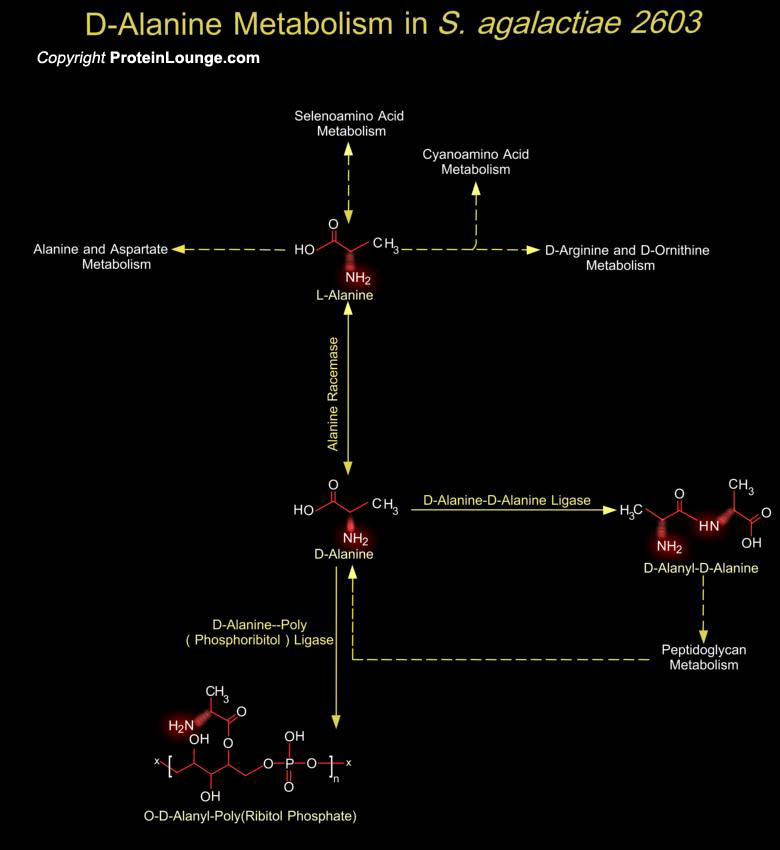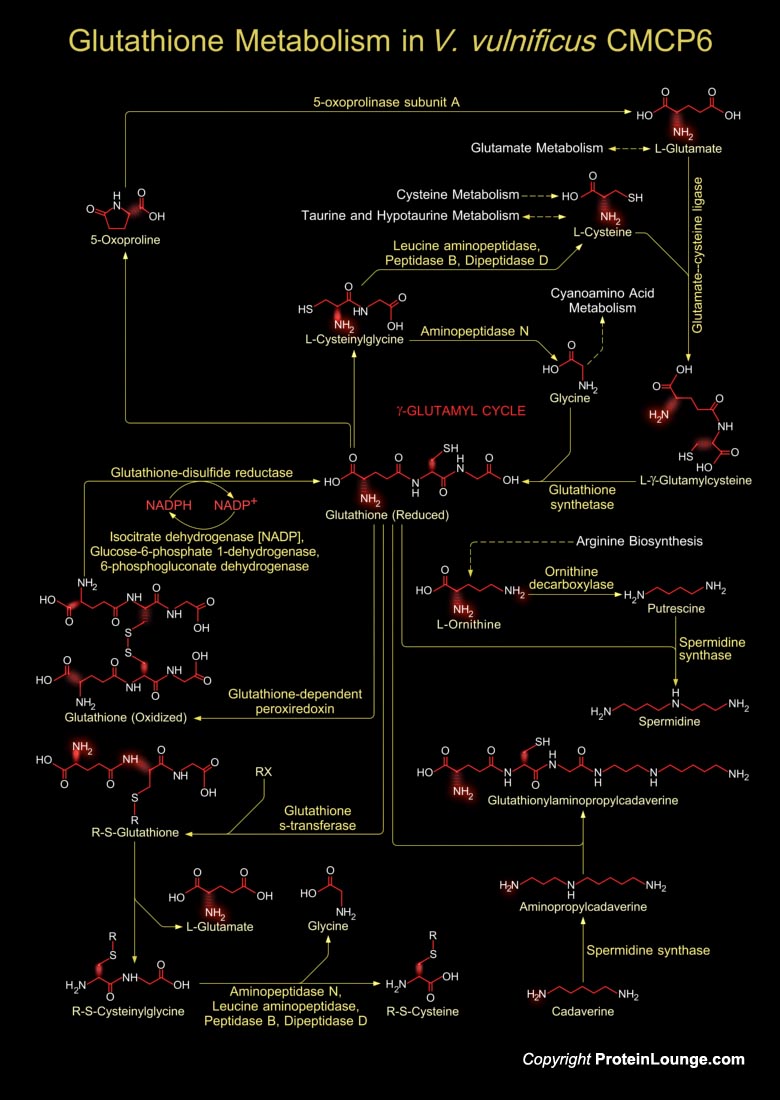Featured Pathways

The ability of the immune system to respond appropriately to foreign antigen is dependent on a delicate balance of activating and inhibitory signals. Although positive signaling is essential for the generation of effective immunity, counterbalancing the immune response by inhibitory pathways is equally important. Loss of inhibitory signaling is often associated with autoreactivity and unchecked[..]

Fcγ receptors are a family of glycoproteins expressed on the membrane of immune cells, and capable of binding the Fc portion of IgG antibody molecules. These receptors bind to various IgG subclasses with different affinities, and when crosslinked by multivalent antigen-antibody complexes, can induce different cellular responses. In humans, several activating receptors (FcγRI/CD64,[..]

Phagocytosis, defined as the cellular uptake of particulates (>0.5 m) within a plasma-membrane envelope, is closely related to and partly overlaps the endocytosis of soluble ligands by fluid-phase macropinocytic and receptor pathways. The uptake of exogenous particles (heterophagy) has features in common with autophagy, an endogenous process of sequestration and lysosomal disposal of damaged[..]

Ultraviolet radiation (UVR) is an electromagnetic radiation that is shorter in wavelength than visible light but longer than X-rays. It falls in the range of 100nm to 400nm and is the most important environmental carcinogen leading to the development of skin cancers. UVR is divided into at least three different categories based on wavelength that includes ultraviolet C (UVC;[..]

Ultraviolet radiation (UVR) is an electromagnetic radiation that is shorter in wavelength than visible light but longer than X-rays. It falls in the range of 100nm to 400nm and is the most important environmental carcinogen leading to the development of skin cancers. UVR is divided into at least three different categories based on wavelength that includes ultraviolet C (UVC;[..]

Rhodopseudomonas palustris is a purple photosynthetic bacterium that belongs to the Alpha-Proteobacteria and is widely distributed in nature as indicated by its isolation from sources as diverse as swine waste lagoons, earthworm droppings, marine coastal sediments and pond water. It has extraordinary metabolic versatility and grows by any one of the four modes of metabolism that[..]

Staphylococcus aureus are Gram-positive nonmotile coccus that grows in aerobic and anaerobic conditions, in which it forms grape-like clusters. S. aureus is an important nosocomial and community-acquired pathogen. It produces numerous toxins including superantigens that cause unique disease entities such as toxic-shock syndrome and staphylococcal scarlet fever. Its genetic[..]

Group-A Streptococcus pyogenes remains an important human pathogen responsible for a variety of suppurative infections, including pharyngitis, scarlet fever, impetigo, and cellulitis and for nonsuppurative sequelae, such as acute rheumatic fever, acute glomerulonephritis, and reactive arthritis (Ref.1). S. pyogenes strains are grouped into two classes on the basis of post[..]

Group-A Streptococcus pyogenes remains an important human pathogen responsible for a variety of suppurative infections, including pharyngitis, scarlet fever, impetigo, and cellulitis and for nonsuppurative sequelae, such as acute rheumatic fever, acute glomerulonephritis, and reactive arthritis (Ref.1). S. pyogenes strains are grouped into two classes on the basis of post[..]

Streptococcus agalactiae, or Group-B Streptococcus is a Gram-positive nonmotile bacterium and is the leading cause of bacterial sepsis, pneumoniae and meningitidis in neonates in U.S. and Europe. It usually behaves as a commensal organism that colonizes the gastrointestinal or genital tract of 25-40% of healthy women, but it can cause life-threatening invasive infection in susceptible[..]

Staphylococcus aureus are Gram-positive nonmotile coccus that grows in aerobic and anaerobic conditions, in which it forms grape-like clusters. S. aureus is an important nosocomial and community-acquired pathogen. It produces numerous toxins including superantigens that cause unique disease entities such as toxic-shock syndrome and staphylococcal scarlet fever. Its genetic[..]

Staphylococcus aureus are facultative anaerobic Gram-positive cocci, that is a major cause of hospital acquired (nosocomial) infection of surgical wounds and infections associated with indwelling medical devices. S. aureus causes food poisoning by releasing enterotoxins into food, and toxic shock syndrome by release of superantigens into the blood stream. Over the last[..]





















